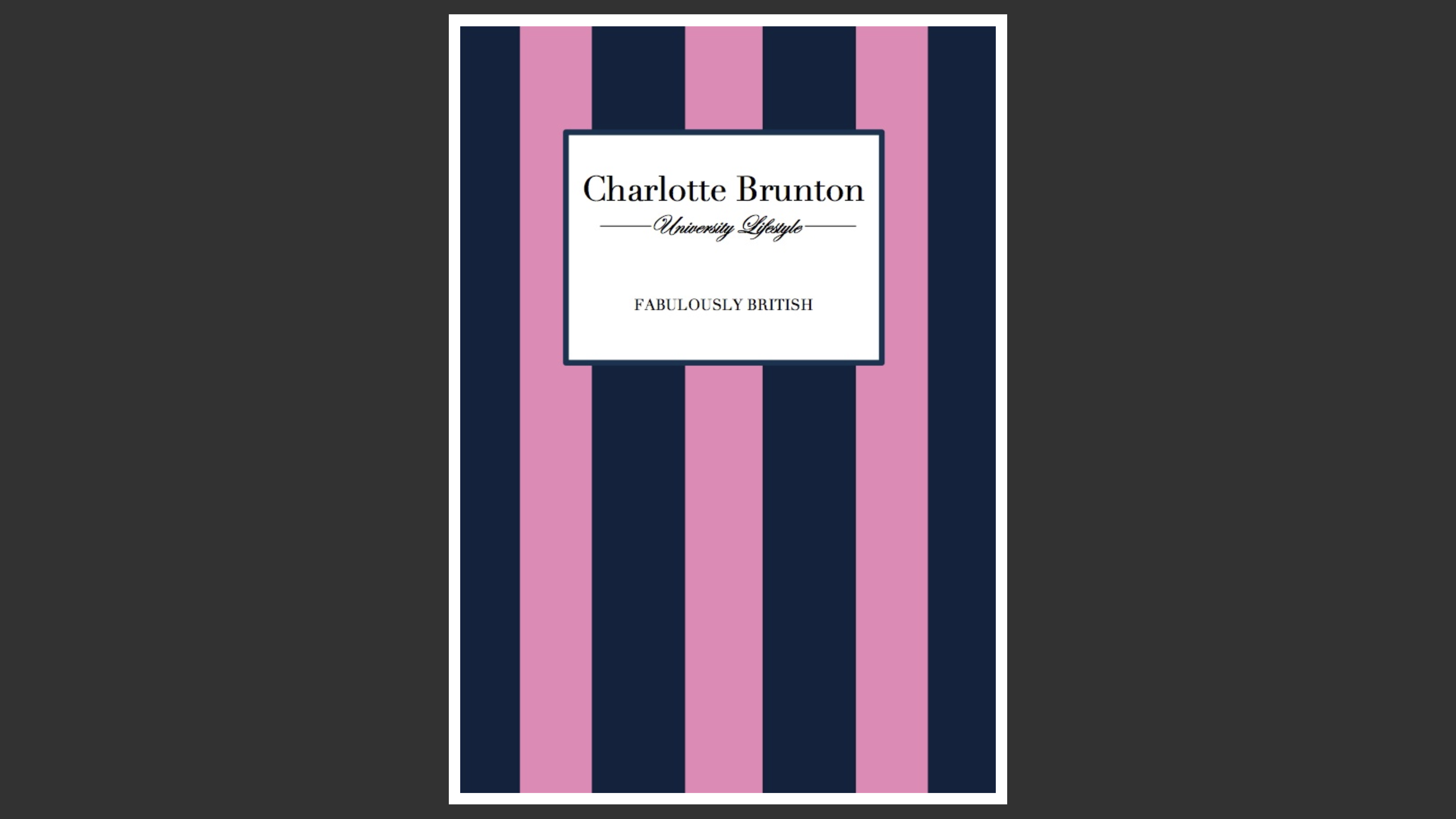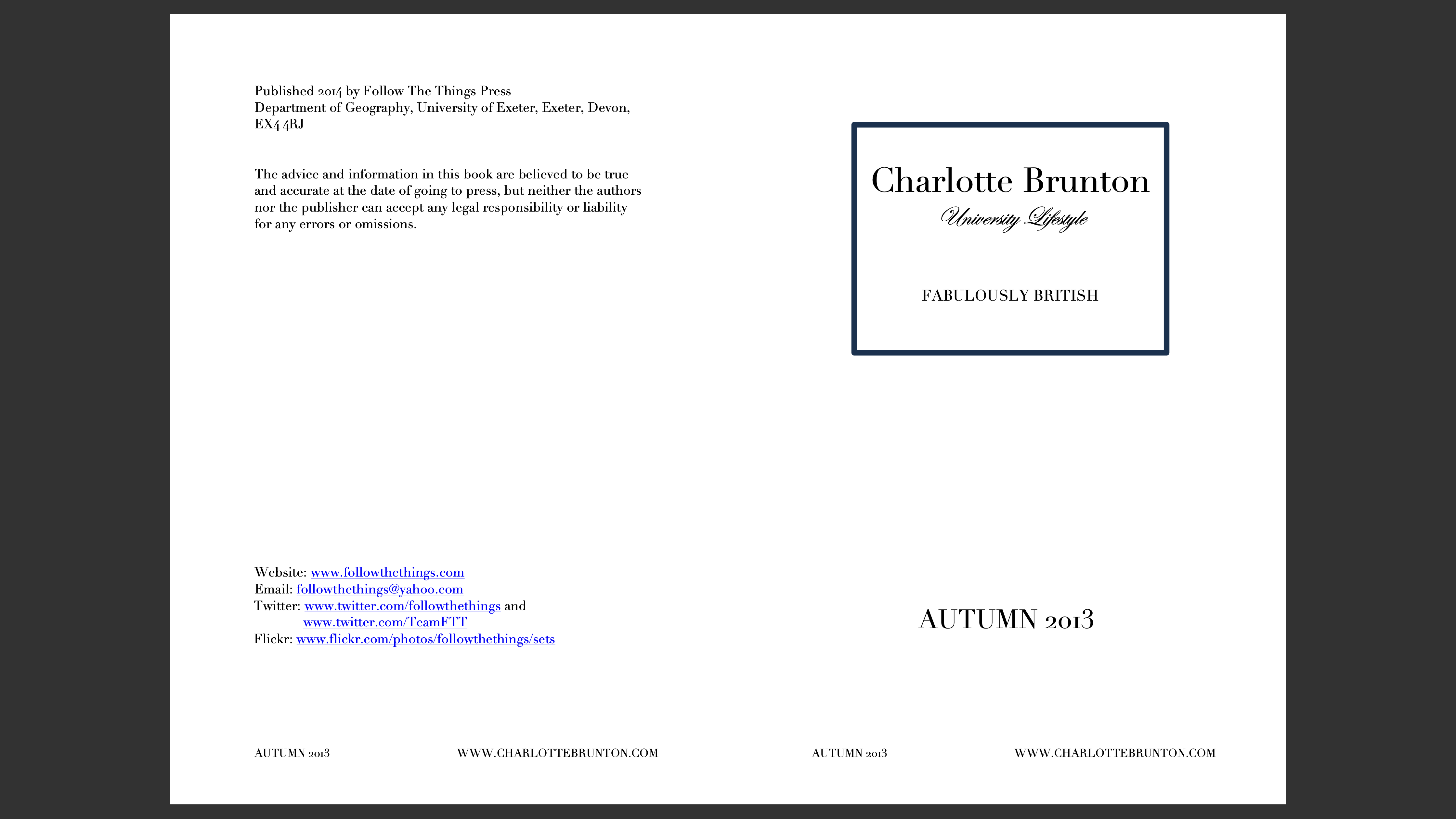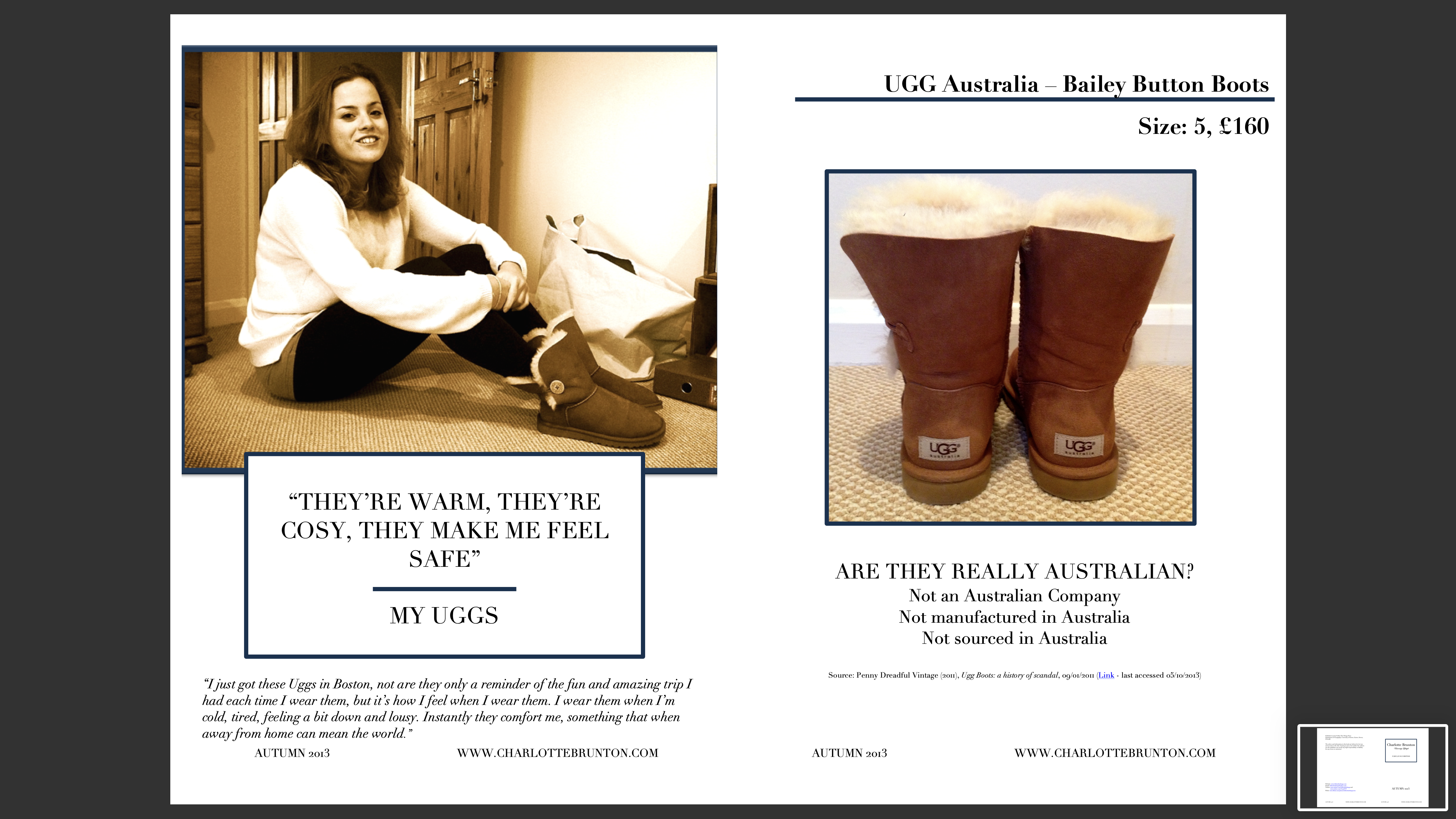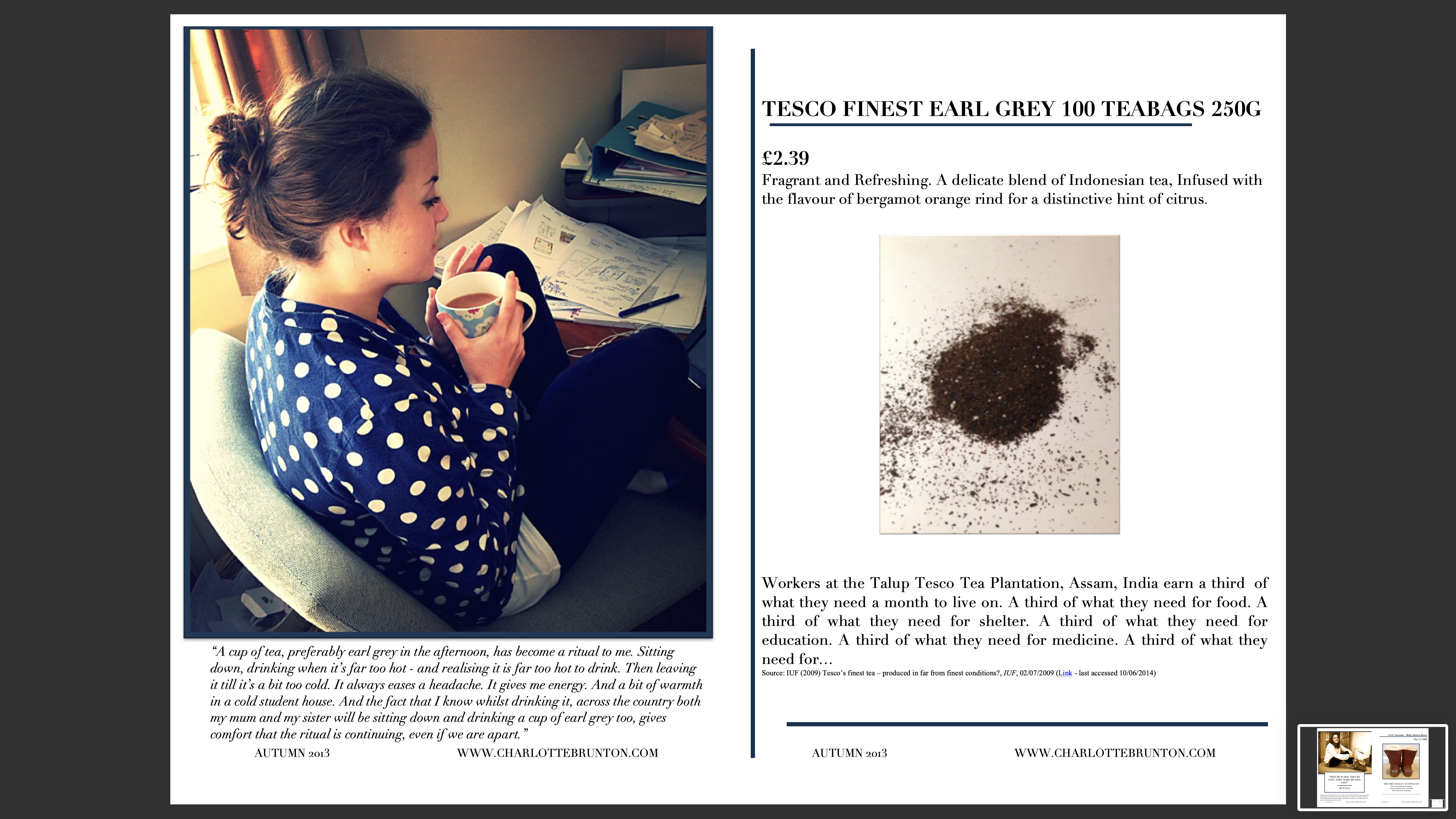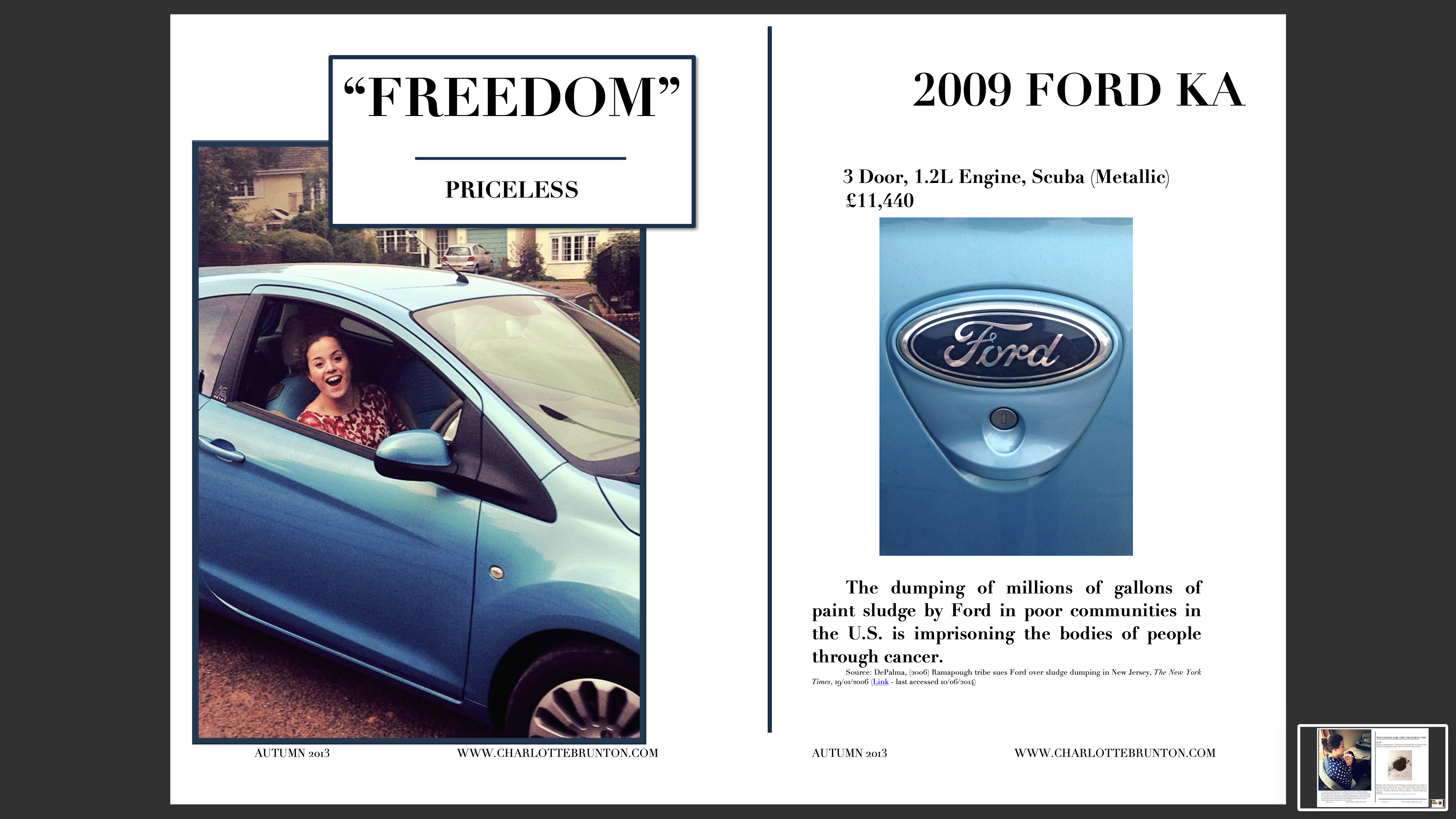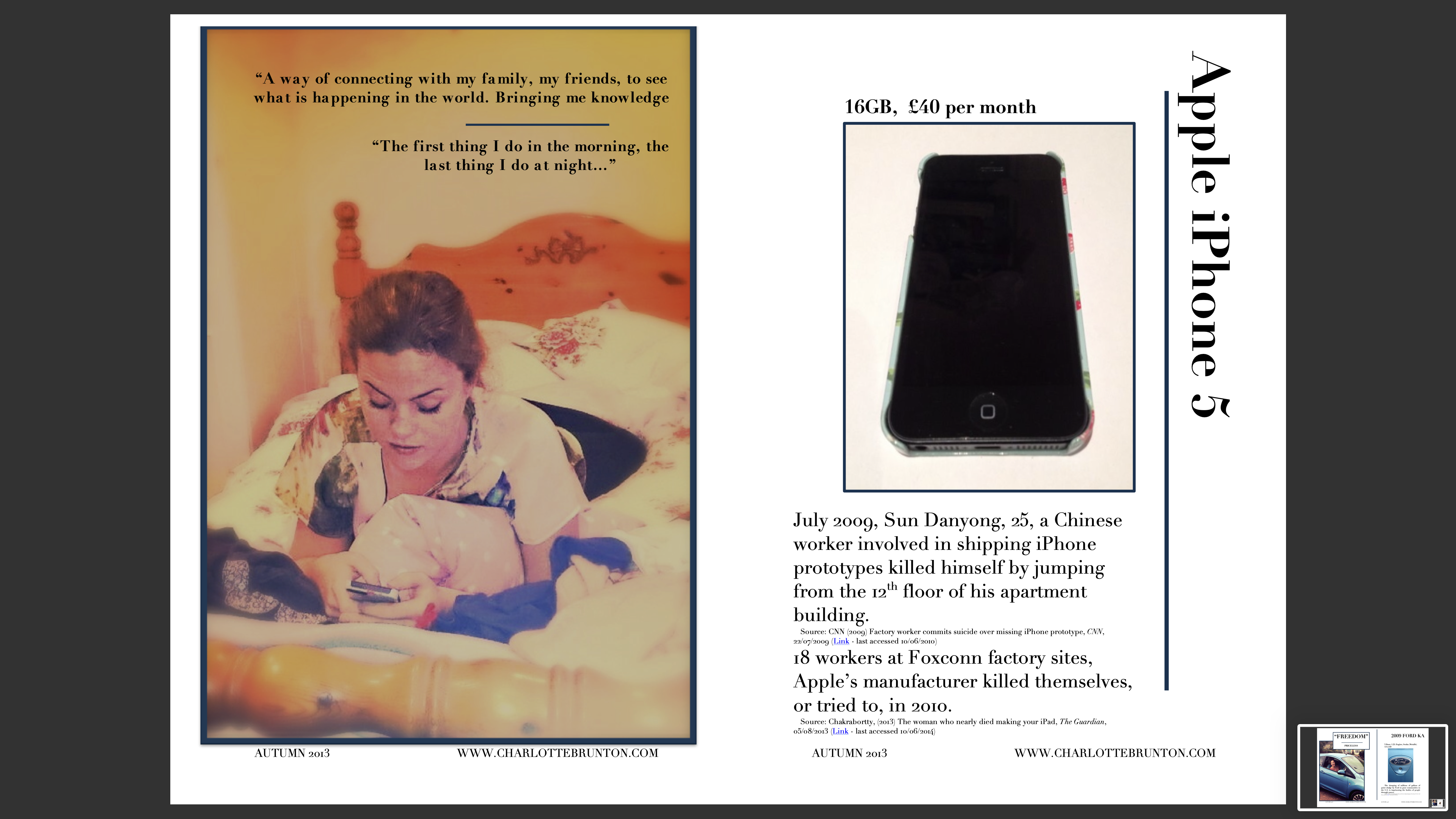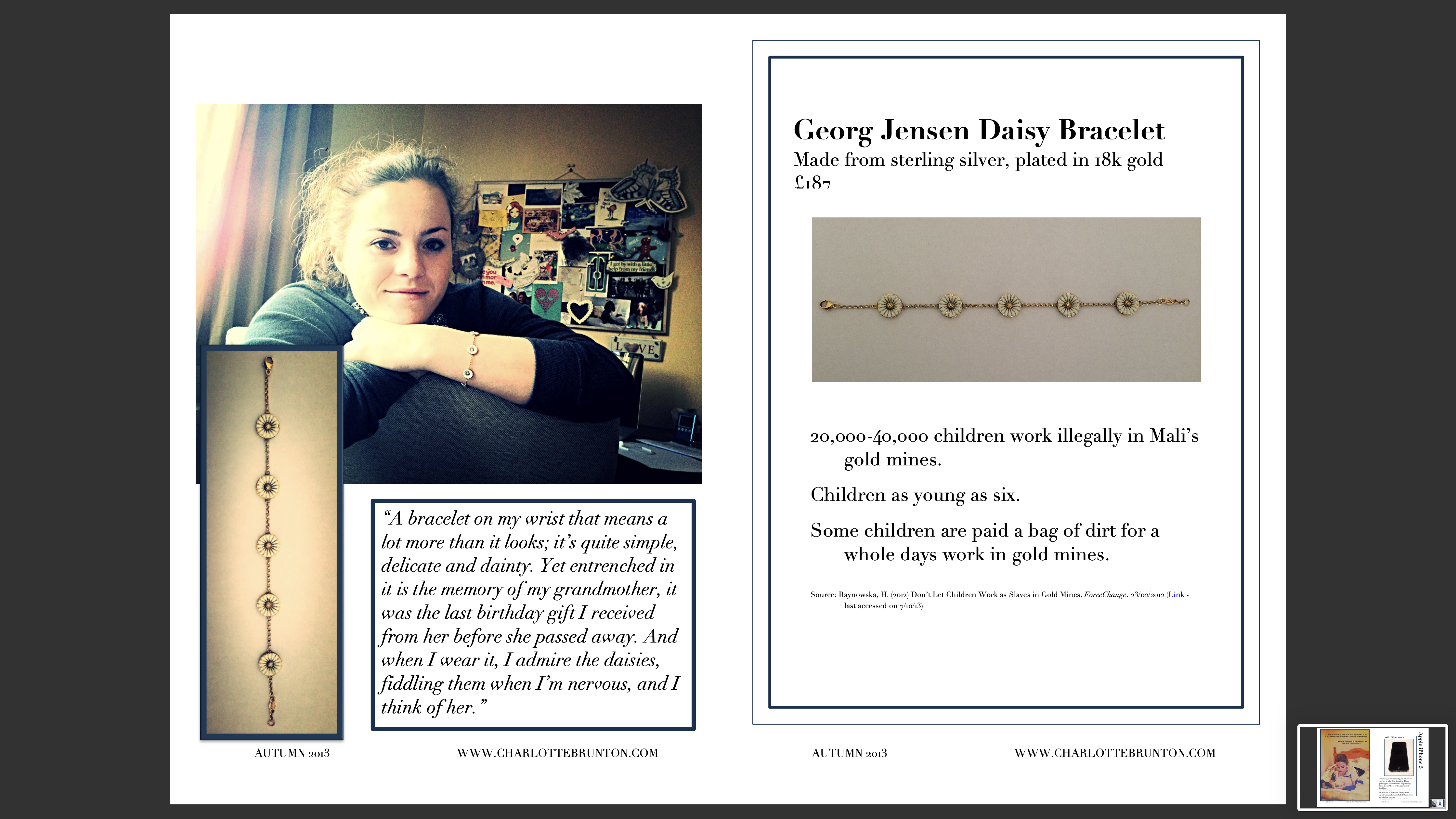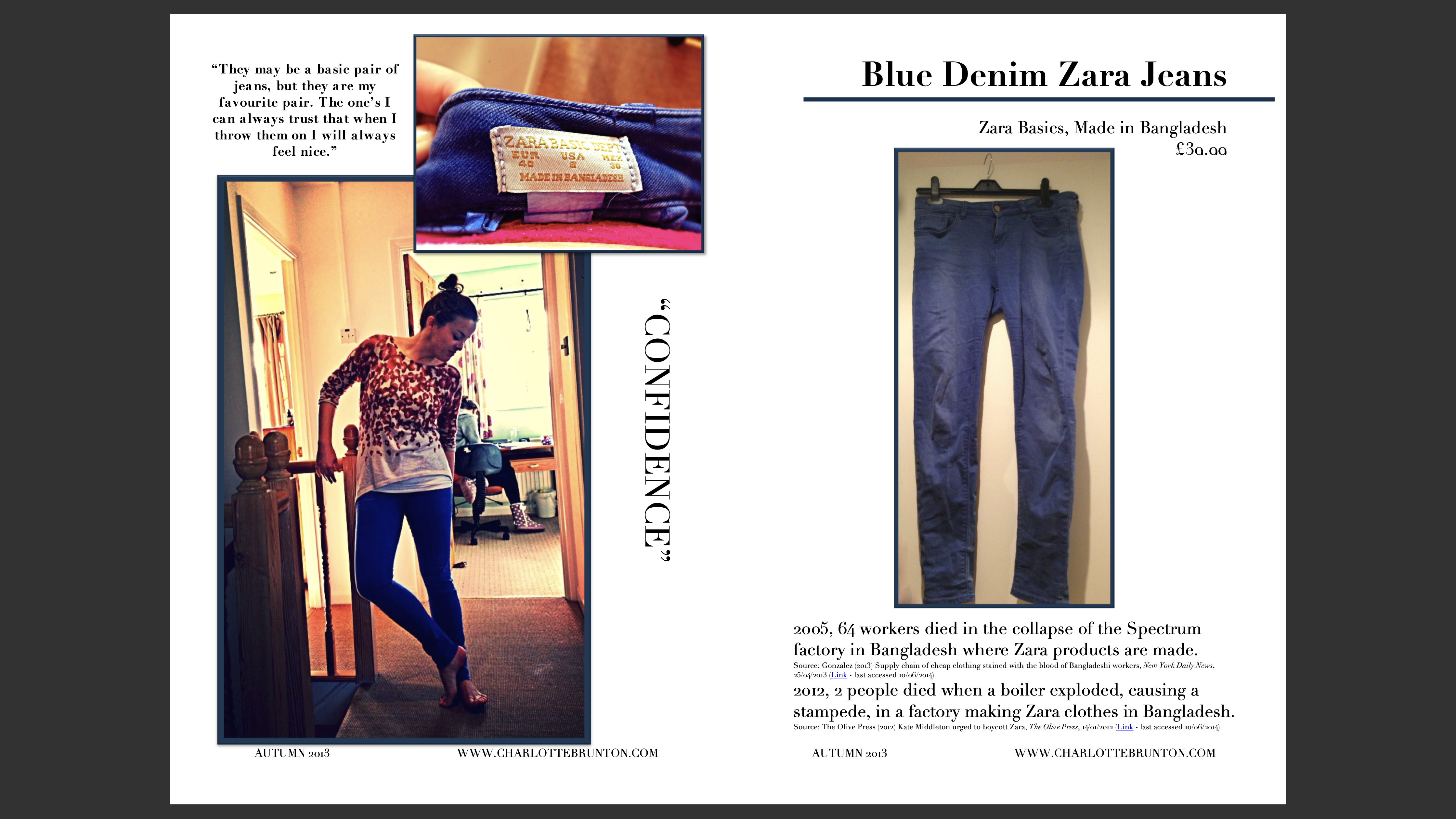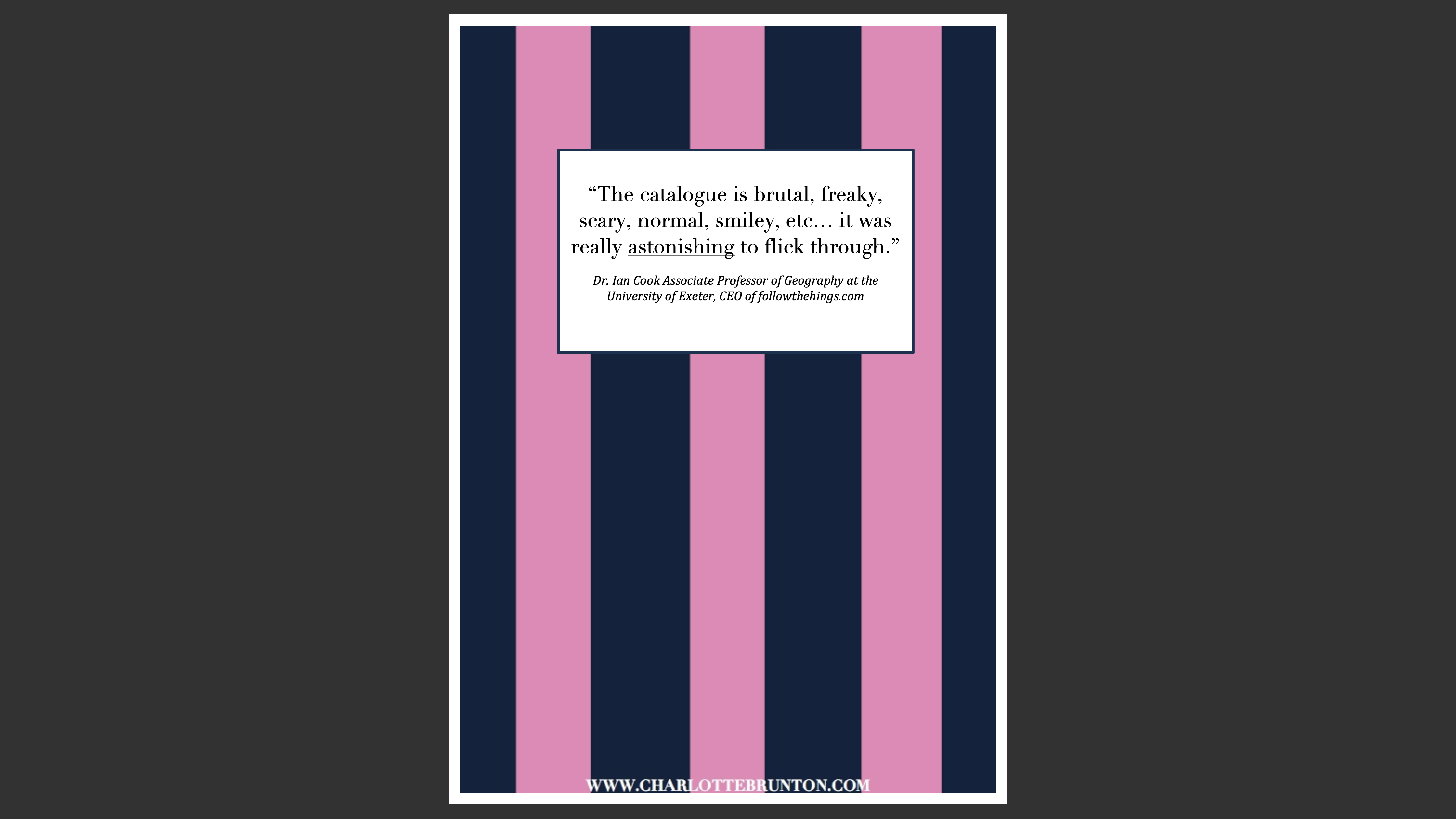
followthethings.com
Fashion | Grocery | Electronics | Home & Auto
“University Lifestyle: Fabulously British“
Undergraduate coursework designed & written by Charlotte Brunton.
Available in full in slideshow above. High resolution download available here.
After researching examples of trade justice activism to add to this site, students taking CEO Ian’s ‘Geographies of material culture’ module at the University of Exeter are tasked to make their own. Charlotte Brunton’s inspiration comes from the junk mail arriving at her student house. Instead of getting interesting letters, she and her housemates get student fashion catalogues. In particular, Jack Wills catalogues – six or more every season. They’re selling students an ‘aspirational’ lifestyle, tempting them to buy the commodities they feature. The people in them, the things they have, the carefree, stylish and connected lifestyles they picture – the designers want students to want them. Charlotte and her friends imagine themselves using this, wearing that, experiencing the lifestyles these things can support, together. But who made these things? What about their lifestyles? Charlotte asks herself how she can create a catalogue that highlights how personal these things are both to her and to the people who made them? In real life, she has an interdependent, culture-crossing, ‘British’ life which they are very much part of. So she designs a ‘lifestyle catalogue’ that you can browse to imagine and buy into with her.
Page reference: Charlotte Brunton (2014) University Lifestyle: Fabulously British. followthethings.com/university-lifestyle-fabulously-british.shtml (last accessed <insert date here>)
Estimated browsing time: 15 minutes.
Continue reading University Lifestyle: Fabulously British
